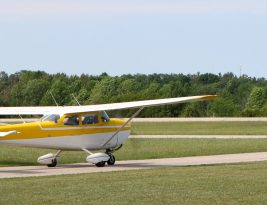Today we’re talking about takeoff distance. The majority of pilot-cause aircraft accidents occur during the takeoff and landing phase of flight. Therefore, a pilot must be familiar with all the variables that can influence aircraft performance during these critical phases. This post is excerpted from the Pilot’s
…Author: ASA
Federal Aviation Regulations and rules can get confusing, particularly those pertaining to instrument flight rules (IFR). One in particular I always found confusing, and at times up to interpretation, deals with when a pilot may log an IAP. As you know, logging instrument approaches is an important aspect in abiding
…Once again, we’re pleased to feature a guest post FAA DPE and CFI Jason Blair. Check out his post from last week on why you should be practicing the glide and his post on flying the traffic pattern from earlier this year. He writes
…In keeping with the theme of gliding, this week I am going to follow-up Jason’s post with a clip from our Virtual Test Prep™ Flight Maneuvers DVD on airborne engine failures. After reading Monday’s post and watching this short clip see if you can
…This week, we’re pleased to feature guest posts from CFI and FAA DPE Jason Blair! We featured Jason’s excellent write up on flying the traffic pattern earlier this year. He writes his own blog at jasonblair.net.
Gliding is for gliders, right? Well, it’s not just for
…In today’s post, we are going to discuss the Airplane Flight Manual (AFM). The AFM is a document that is developed by your airplane’s manufacturer containing specific information in regards to operating instructions of the aircraft. These manuals are specific to an aircraft’s serial number and are approved by the
…The success of a flight depends largely on thorough preparation. In the course of your training, a pattern of regular preflight actions should be developed to ensure that this is the case. This includes planning a flight, and checking
…Monday’s post gave us an introduction into the world of gyroscopic flight instruments and as we learned these include the attitude indicator, turn coordinator, and heading indicator also referred to as the directional gyro. Each one of these gyroscopic flight instruments functions based off the principle of rigidity
…

